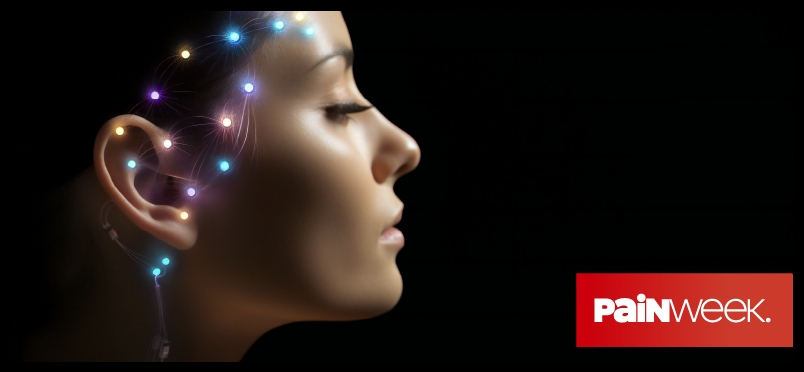| pain management
The Fusion of East and West in Auricular Therapy for Pain Management

What is Auricular Therapy and Its Origins?
Auricular therapy, also known as auricular acupuncture, has a longstanding history spanning continents. It serves as a complementary therapeutic approach for providers in addressing patient pain complaints. Originating from traditional acupuncture, auricular therapy is recognized for its simplicity, safety, efficacy, and cost-effectiveness.
Auricular therapy is defined as "a health care modality whereby the external surface of the ear, or auricle, is stimulated to alleviate pathological conditions in other parts of the body." Several nerves, including the greater auricular nerve, lesser occipital nerve, auricular branch of the vagus nerve, and auriculotemporal nerve richly integrate the ear. Imagine the external ear like a switchboard to the brain where each point triggers impulses from the ear via the brain and neural pathways to a specific body part. This is the potential mechanism for the effects of auricular therapy to alleviate pathological conditions in the body.
Historical Development: A Journey from Ancient Traditions to Modern Practices
Auricular therapy is a good example of the cross-pollination of ideas and respect for others' ideas. Acupuncture has a rich history in Asia, particularly in China. Dr. Paul Nogier hailed as the pioneer of French auricular therapy, laid its foundation. While observing a scar on a patient's outer ear, reportedly from a folk healer's treatment for lower back pain, Dr. Nogier's curiosity was piqued. This led him to identify the lumbar spine point, initiating the development of the French auricular therapy map, which has undergone subsequent refinement. Dr. Nogier's findings were published in a German journal, eventually reaching China.
In the late 1950s, Nogier's work was brought to the attention of The Nanking Army Ear Acupuncture Research Team in China. They treated over 2000 patients using Nogier's research and recorded the results as very positive for ear acupuncture; consequently, influencing Chinese acupuncture practices, where they integrated the French system into their meridian-based approach.
In 1990, the World Health Organization (WHO) collaborated with doctors from Asia, Europe, and America to standardize auricular anatomical names, points, and locations as it is widely practiced today.
Exploring Techniques and Practices in Auricular Therapy
Auricular therapy encompasses various techniques aimed at stimulating specific points on the external ear, including acupuncture needles, ear seeds or metal pellets (acupressure), and manual stimulation. Practitioners may employ needle insertion, electrical stimulation, or low-level lasers on auricular points.
Comparison of Systems
-
Chinese System of Auricular Therapy is rooted in the meridian system, focusing on meeting points of energetic channels.
-
French Style of Auricular Therapy is biomedical in nature, targeting areas of low electrical resistance and vascular autonomic signals.
Applications in Pain Management
Chronic pain conditions, such as neck pain and cancer-related pain, have been the focus of several studies assessing the efficacy of auricular therapy. For patients with spasticity and pain in the extremities who cannot tolerate long periods of lying down with needles, auricular acupuncture is a promising alternative.
Chronic Neck Pain
A 2021 study by a Brazilian group trained in the French style of auricular therapy explored auriculotherapy for chronic cervical pain. This study demonstrated significant reductions in the Neck Disability Index (NDI) and numerical Visual Analogue Scores (VAS) at one month and four months using manual therapy at auricular points once a week for six weeks.
In 2018, in another randomized study, researchers examined the effects of auricular acupressure on pain and disability in adults with chronic neck pain. The study showed a reduction in NDI and VAS scores following acupressure with plant-based ear seeds for two weeks.
Back in 2003, a double-blind, randomized, controlled study comparing electroacupuncture to conventional acupuncture found electroacupuncture to be more effective in reducing chronic pain.
Cancer-Related Pain
A study in 2003 examined the analgesic effect of auricular acupuncture for cancer pain in a randomized, blinded, controlled trial; it showed a 36% pain reduction in patients receiving needles at points with detected signals compared to control groups receiving placebo treatments two months after treatment ended.
Recently, in 2023, the PEACE trial, a study at Memorial Sloan Kettering Cancer Center, found minimal differences between personalized electroacupuncture and auricular acupuncture in chronic muscular-skeletal pain management among cancer survivors, and both led to greater pain reduction than usual care.
Acute Pain
The Battlefield Acupuncture Protocol, utilizing specific auricular points, effectively reduces acute pain, particularly in emergency department settings.
Niemtzow developed the Battlefield Acupuncture (BFA) Protocol. It requires gold ASP needles- this is likely because, in auricular acupuncture, the metal used is believed to have an effect. BFA uses five acupuncture points: Omega 2, ShenMen, Wonderful Pt. Zero, Thalamus (Internal), Sun (Temple), Cingulate Gyrus. While data on efficacy is mixed, the data from an ED work setting shows positive results.
Auricular Therapy's Promise in Nonopioid Pain Management
To advance the field of auricular therapy, further research and exploration are imperative, particularly in expanding its applications across diverse healthcare settings. Key areas for development include:
-
Replicating and building upon existing research.
-
Exploring alternative settings for intervention delivery.
-
Improving insurance reimbursement.
-
Enhancing training and education standards, including potential board certification.
Auricular therapy, bridging Eastern and Western medical traditions, offers a promising nonopioid alternative for chronic pain management. Its analgesic effects, primarily mediated by the vagal system, underscore its potential significance in addressing pain across various patient populations. Continued research and increased utilization of auricular therapy can offer effective pain relief to patients and combat the opioid crisis.
Did you enjoy this article?
Subscribe to the PAINWeek Newsletter
and get our latest articles and more direct to your inbox